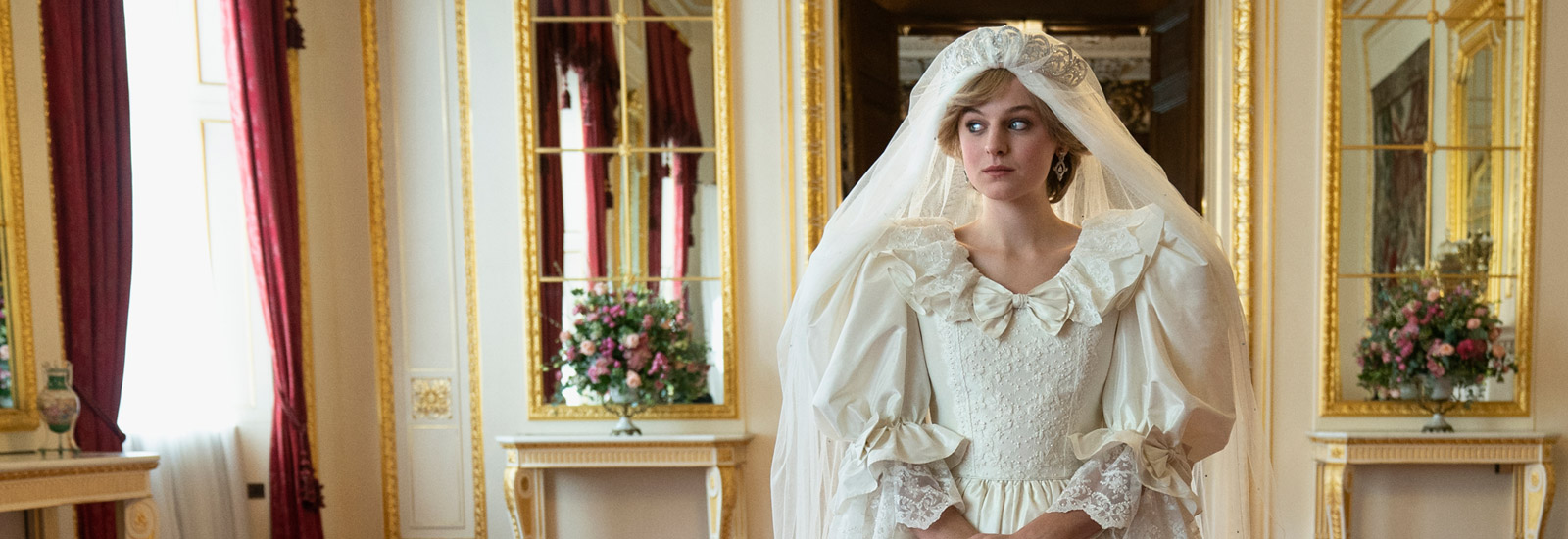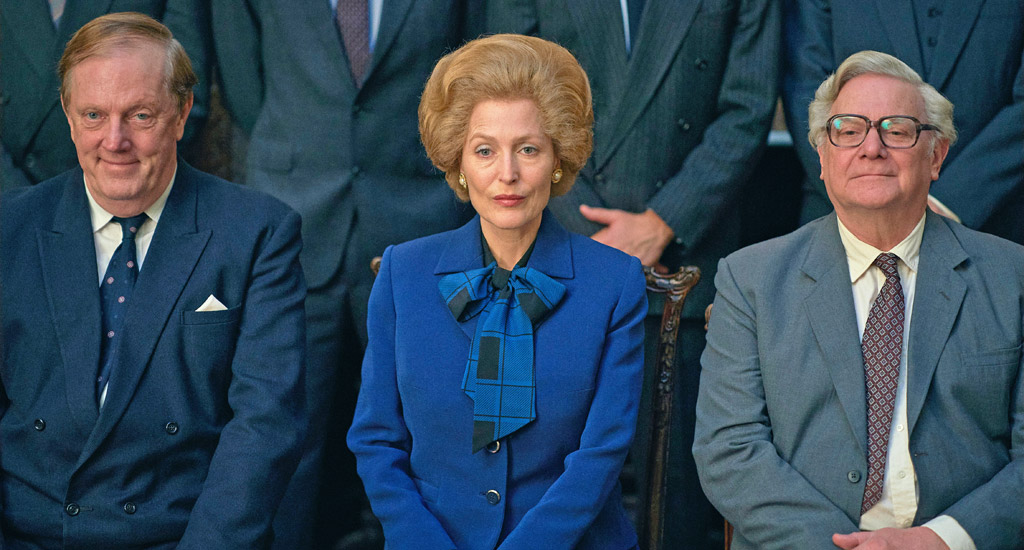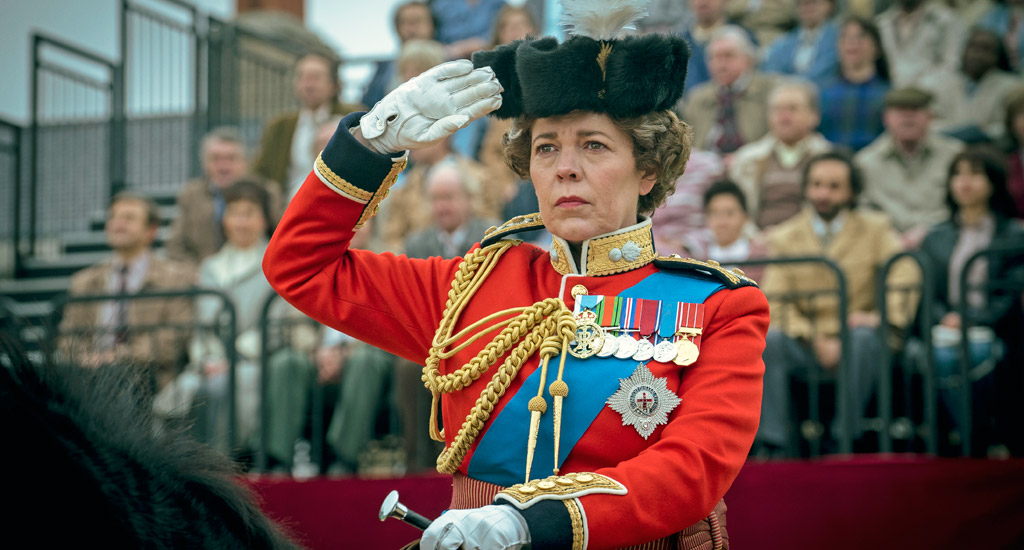
The Crown has proven itself, over the course of three seasons so far, to be frustratingly addictive even for viewers who otherwise don’t invest energy in thinking about royals. It’s Netflix’s crown jewel, jam-packed with talent, a prestige sheen, and production values out the bum (as the Brits say), but yes, it’s essentially a soap opera about the monarchy. So, I still feel a little bit aghast to be seduced by the lavish and voyeuristic aspects of the show. Yet one really needn’t feel guilty about enjoying it. The show gives an admittedly fictionalized peek behind the stuffy curtain to see exactly how the most upper-crusty of Brits interact, and it’s a weirdly relaxing watch. Get ready, though, because The Crown‘s fourth-round takes some sharp detours. Bye-bye, comfort, and hello, chaos.
Granted, we’ve seen some mayhem along the way, as with Vanessa Kirby’s rage-filled incarnation of Princess Margaret. With time, Helena Bonham Carter’s Margaret grew content with her place among the royal hierarchy and found amusement where possible. Yet in the late 1970s, Prince Charles (Josh O’Connor) isn’t handling his similar situation well. With the introduction of two movers and shakers, it quickly becomes apparent that the Windsor fairy tale is about to crumble, and Downing Street’s not doing so hot either.
Welcome to the era of Lady Diana Spencer (Emma Corrin) and Margaret Thatcher (Gillian Anderson), neither of whom fit in with the long-standing, carefully-crafted veneer that they experience in their dealings with the royal family. Things get dark, which is to be expected, given what the world already knew about Diana’s soul-deep unhappiness despite (and partially due to) the public’s embrace of her refreshing ways, but boy, the show does not shy away from the strategic and tactical decisions that made the Iron Lady such a deeply unpopular figure.

Telling the tales of these two polarizing women, and how they measured up against the public’s perception of Queen Elizabeth, was a careful needle to thread. That’s especially the case because The Crown has never explicitly taken a pro- or anti-monarchy stance, but there are shades of judgment now, and the monarchy was never quite the same following this era. While this transformation goes down, Olivia Colman’s resolute portrayal of The Queen (which followed a slightly breezier but still stoic take by Claire Foy) continues, but it’s telling to see where she lands on the Diana-Thatcher spectrum. If the show wanted to play by Goldilocks standards, Diana could be considered “too soft” and Thatcher “too hard” with Elizabeth falling in the middle as some sort of “ideal.”
That would be too easy, though. Viewers of this show are well aware of Diana’s ultimately tragic, 1990s fate (while fleeing from paparazzi in Paris). The show doesn’t go there this season, but what Diana endures isn’t pretty. Her coping mechanisms, likewise, are self-punishing ones and fueled by Charles’ behavior as a scorn-filled spouse and total cad. In sharp contrast, Diana’s embraced by the public for her decidedly un-Windsor ways, which only perpetuates the cycle. It’s impressive, really, how the show finally allows the British royals to show their asses, and it took Diana to make it happen. Not that she wanted it to be that way, but The Crown does not hold back while pointing the finger at how wolves were allowed to descend, and the Queen let it happen.
While it’s difficult in 2020 to feel sorry for any reality-based figure — due to current events with massive economic repercussions — who sits in a so-called “gilded cage,” The Crown gets the job done with Diana. She’s utterly miserable and left without much recourse, all in the name of royal succession. For her, the fairy tale collapses as soon as it began, which happens in lockstep with the Thatcher-fueled disillusion of the British people. An episode where Thatcherism’s effect on the poor arrives on the Queen’s doorstep feels difficult to watch but impossible to ignore. And Elizabeth’s response to a growing (and justifiable) movement against Thatcher results in remarkable maneuvering on the monarch’s behalf.

The Elizabeth-Margaret Thatcher dynamic (since the Diana-Charles one becomes quite grueling) actually turns out to be the most entertaining relationship of this season. Of course, the set up — both being female leaders who are the same age — is there to be f*cked with. Both women realize that they’re held to different standards than men. They will be accused of being difficult or argumentative in positions where men would be called “strong leaders.” And yes, their advisors and spouses very well expect the women to tear each other apart for sport. That doesn’t happen. Instead, we get a chess game that isn’t quite as freshly compelling as literal chess-drama The Queen’s Gambit, but it’s still invigorating to witness. The Queen is tasked with keeping up a certain set of appearances, while Thatcher can make more outwardly visible moves, but Olivia Colman has a ball while secretly jousting and adhering to the rule that the Queen’s never supposed to take a political position (but you know she does).
History tells us that Elizabeth’s reign has endured fourteen prime ministers thus far. Thatcher arrived smack in the middle of that order, so we know that Thatcher’s presence has an end date, but before that happens, England reaches pressure-cooker status. Seeing these two women learn to agree to disagree, and disagree to agree, is quite something. Thankfully, this is never played up in a sexist way, although politically speaking, it’s clear that England’s wretched position during this era will ease up, further down the line. However, Diana’s presence had an enduring effect upon the monarchy, and they don’t come off looking so great.
Look, all seasons of The Crown are very watchable, but Season 3 did dial back on dramatic momentum by being just fine but a bit of a placeholder. Some of the interpersonal focus, for example, focused on the Duke of Edinburgh’s masculinity crisis that was fueled by space-race envy. Giant rockets = penises, right? That was a silly story arc with very little consequence, but with Season 4, the stakes are higher across the board and the bingeworthiness returns. Spectacular performances go down. Corrin is heartbreaking during many moments, and Gillian Anderson is reaching out for an Emmy. She must have gone hoarse due to pulling off Thatcher’s distinctively authoritative (and some might even say authoritarian) tones. Yet there are moments where Britain’s first female prime minister is allowed, behind closed doors, to show emotion. It’s a startling contrast from her public persona, and this season feels resoundingly “human” while underscoring the inhumanity of some leaders’ behavior.
This season of The Crown‘s an intense one and driven by conflict, but it’s not all serious. There are, after all, silly parlor games to be witnessed at Balmoral. And Margaret’s still bringing the bawdiness, thank goodness, yet history pushes England forward, relentlessly at times, to vanquish the overall fairy tale of the Windsors as two more seasons beckon from the horizon.
Netflix’s fourth season of ‘The Crown’ streams on November 15.
